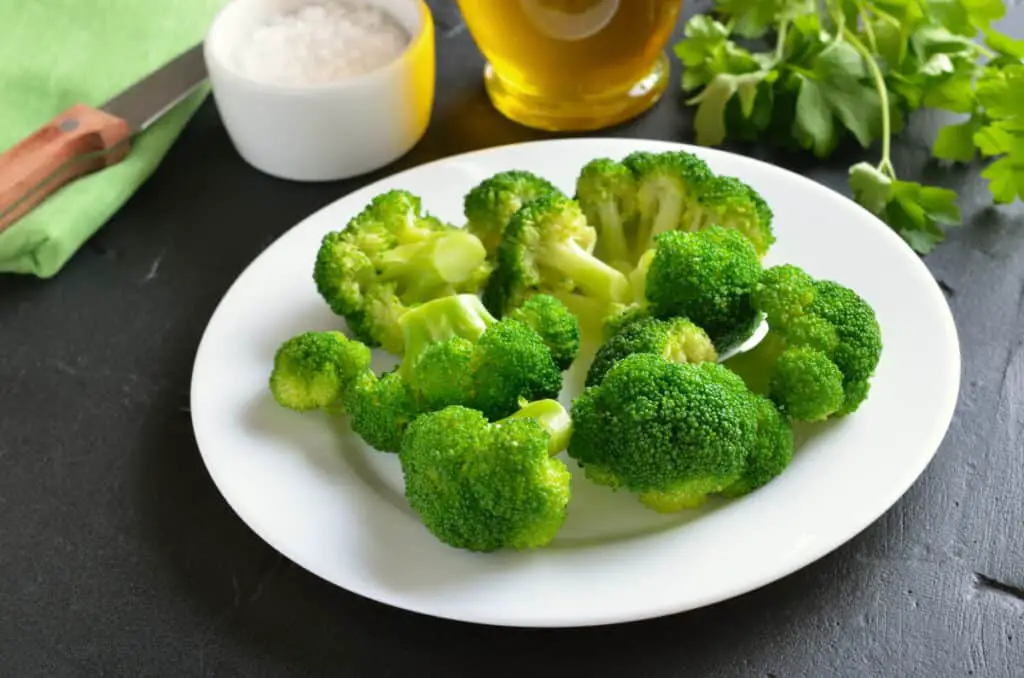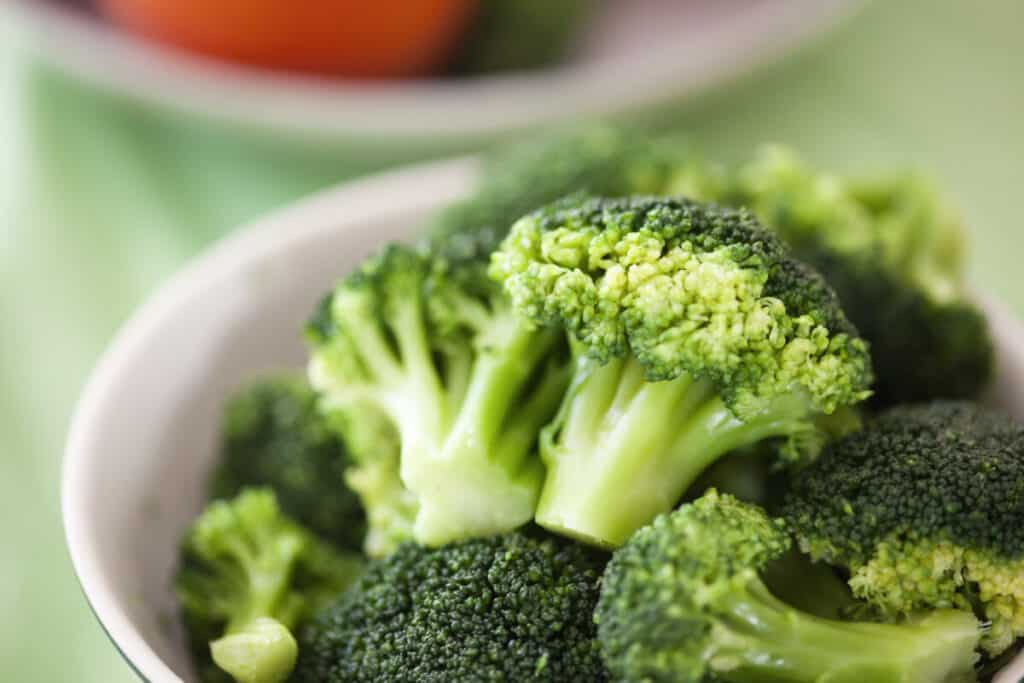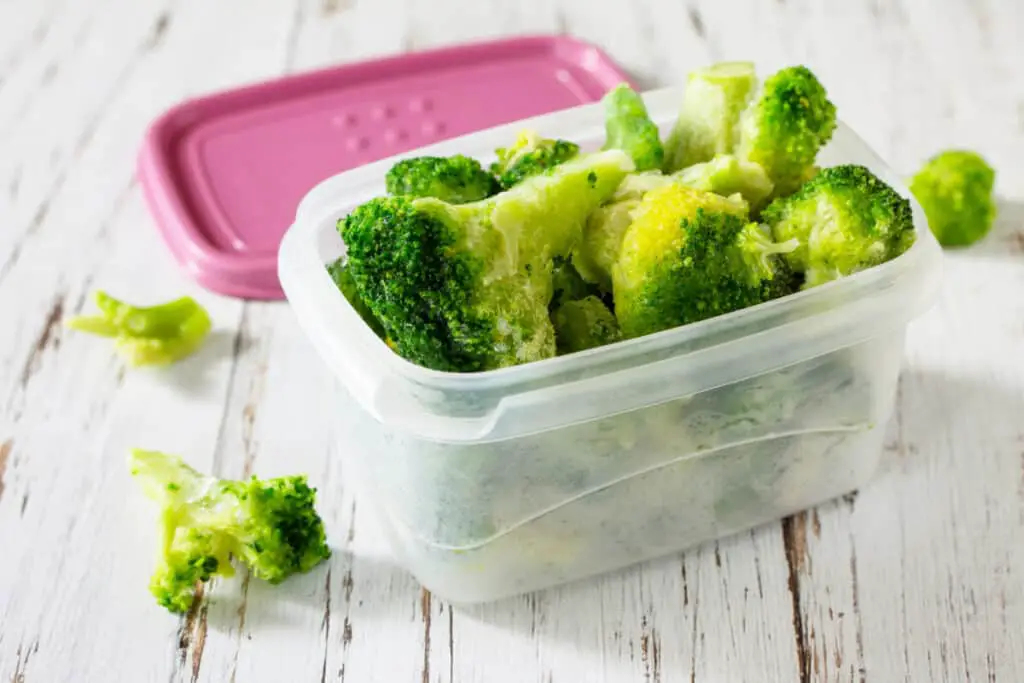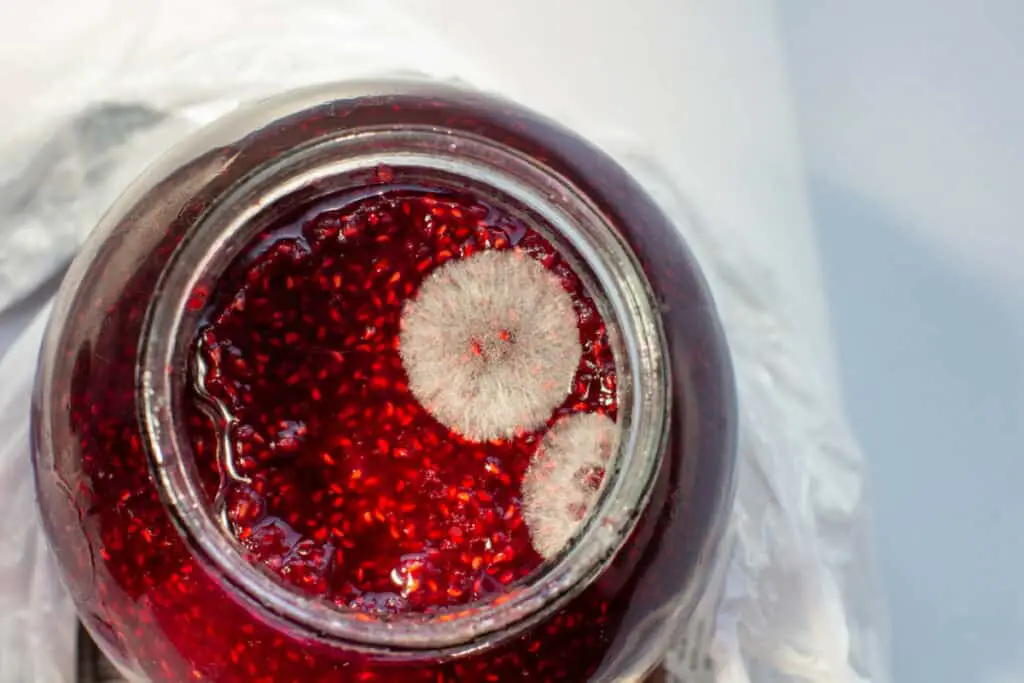This post contains affiliate links.
Although it’s in most cases it is not anyone’s goal to eat moldy food, it does happen by accident sometimes and fortunately, it is not always dangerous to eat moldy food. However, is it safe to eat moldy broccoli?
If the broccoli is moldy all over, do not eat it and discard it in the trash. If the broccoli has only a few small moldy spots, it is possible that it is still safe to eat after cutting away and discarding any moldy spots. Discard all broccoli within a 1-inch radius of any moldy spots.
Since broccoli is not a high moisture food, it could be salvageable if you find a very small amount of mold on it. Keep in mind that mold is caused by bacteria invisible to the naked eye that could be present on the food in other areas other than the moldy spots, so it’s always a risk to consume any food that has begun to mold.
Eating Moldy Broccoli
If you forgot about the broccoli that you had stored in the fridge and it has started to get moldy, you can eat the parts of the broccoli that the mold has not touched without suffering negative health consequences.

If you find mold on the broccoli you were planning on adding to dinner, simply cut away and discard the moldy parts. Make sure you cut about 1 inch away from the mold to prevent eating mold particles that have spread but not grown so you can see it yet.
However, if mold has consumed most of the broccoli, it is best for you to simply throw it away. It will be extremely hard to cut away the mold so it is safe enough to eat.
Make sure you cook the broccoli you found mold on after you have removed all moldy parts of the stock. The heat from cooking the broccoli will kill the mold and prevent it from making you sick.
How to Know If Broccoli Has Gone Bad
Since unintentionally consuming moldy or rotting food is not an ideal situation in which to find oneself, there are a few different signs to look for as you check your food beforehand to make sure it has not yet started to go bad..
for as you check your food beforehand to make sure it has not yet started to go bad..

The easiest way to tell if your broccoli has gone bad is if you can see visible mold on it. This is the tried and true sign that most of us look for when assessing the freshness of our food and produce. A few small mold spots aren’t the worst thing in the world, and these can usually be cut away and disposed of and the remaining parts of the broccoli can still be eaten.
Another indicator of bad broccoli is when you notice any change in color. The deep, fresh green color of broccoli will begin to yellow as it becomes less fresh. The broccoli will start to taste more bitter as it yellows, so you want to be sure to eat your broccoli before it gets to this stage.
Another test of broccoli freshness is texture. Raw broccoli should be firm so if it is ever mushy or limp, it’s a good indicator that something is wrong and you probably don’t want to eat it anymore. If your broccoli looks like it is no longer good enough to eat, even if it doesn’t have mold on it, throw it away or put it in your compost bin.
How Long is Broccoli Good For?
It’s a good idea to have a general timeline for your food so you’re not stuck guessing how long it’ll be good for. After buying broccoli, it’s typically good for one to two weeks when stored in the fridge.
Since the one-to-two-week timeframe of freshness is pretty broad, it’s important to check your food regularly. Sometimes, broccoli will grow mold or turn yellow after one week, while in other instances it will still be fresh, green, and firm after two weeks. Although your broccoli could potentially last a couple of weeks, a good rule of thumb is to use the broccoli within the first few days or by the end of the first week, since there’s no guarantee that it will stay fresh for a full 2 weeks.
In cases where you have leftover raw broccoli after a meal or snack, it’s best to eat it within 3-5 days. Cooked broccoli will typically last 5 to 7 days when refrigerated.
How to Store Broccoli
Storing your produce correctly can help it stay fresh for longer periods of time, so here are a few suggestions to keep in mind for storing your broccoli.

Raw broccoli is best stored in the fridge rather than at room temperature. Leaving broccoli out will cause it to turn yellow quicker. Also keep in mind that you should not wash the broccoli head before putting it in the fridge. You can keep the broccoli wrapped in a plastic bag before placing it in the fridge. Be sure not to seal the bag completely so that there can still be some air circulation.
For cooked broccoli, keep it in a tupperware or other airtight container before placing it in the fridge. You can also always freeze your broccoli if you are needing to store it for a long period of time.
Storing Broccoli in the Freezer
After you have cooked your head of broccoli as part of a dish or just on its own, it can be stored in the freezer. You should not store raw broccoli in the fridge without properly prepping it first, since it will lose flavor. Cooking or steaming broccoli in bulk is not too much work though, and this will keep the broccoli flavorful after freezing it.
Here is a step-by-step process on how to properly freeze your broccoli:
- Wash the broccoli and cut it into smaller pieces
- Boil a pot of water, then place the florets in the pot. Boil for about 3-5 minutes
- Fill a separate pot with cold water and ice cubes
- After boiling, place the cooked broccoli into the pot of cold water
- After cooling the broccoli, drain the water. Place the broccoli on a small towel to dry for 10 to 15 minutes
- Place the broccoli in freezable bags and seal them tightly. Put the bags in the freezer.
When it’s time to cook, you can thaw the broccoli in the fridge overnight or use it in the dish still frozen if you’re making a soup or stir-fry. The broccoli can stay in the freezer for 8-12 months.
What to Do If You Find Mold on Your Broccoli
Although there’s usually no need to hit the panic button after eating a little bit of mold, accidentally taking a bite of a moldy bit of fruit could potentially be a reason for concern due to the potential toxicity of the mold. While it’s easy enough to scrape off any moldy fuzzy bits and eat the food anyways, this could be a dangerous course of action since there’s no way for you to know for sure whether the mold is harmless or harmful purely just by looking at it.

Although eating moldy food will usually have no effect, certain types of molds are extremely toxic to humans and can cause allergic reactions or respiratory problems.
Dietitians state that some molds can also create poisonous toxins that are extremely dangerous to a person’s health and can actually cause death.
state that some molds can also create poisonous toxins that are extremely dangerous to a person’s health and can actually cause death.
Although cutting around and disposing of the moldy bits often feels like the perfect solution, other harmful bacteria could still be present on the food, just less visible. Foods with more moisture are going to have more bacteria throughout in cases where mold has begun to grow, so if you decide to remove the mold and continue eating, you’re still consuming the nasty bacteria that caused the mold to grow in the first place.
The presence of this “invisible” bacteria is why food can still be harmful after clearing away any visible mold. If you have a box of blueberries where you can see that a few have started to mold, the others may look fine, but are still harboring bacteria.
Although it’s tempting to toss out the visibly moldy ones, wash off the rest, and declare the rest as safe to eat, the safest course of action is to toss the entire package since the fungus spores are airborne. Sad as it may be, when one part is contaminated, the rest are likely contaminated too. One bad apple really does spoil the bunch!
According to dietitian Lillian Craggs-Dino, the following are foods that should be thrown out entirely immediately once any sign of mold has been discovered :
- Vegetables and fruits high in moisture like cucumbers, tomatoes and peaches – these types of foods have LOTS of water in them, making it easier for bacteria to spread. Throw our that juicy peach when you find any trace of mold!
- Lunch meats
- Yogurt
- Jams, jellies, and preserves
- Peanut butter
- Bread

The foods that are easier to salvage are going to have a lower moisture content. Hard vegetables like bell peppers, carrots, and cauliflower and hard cheeses can still be consumed after mold has been spotted on them. In this case, you should cut away all food within a 1-inch radius of any moldy spots to get rid of as much of the spores, bacteria, and contaminants as possible.
A good rule of thumb when it comes to moldy foods is that if you’re not sure whether it is safe to eat, err on the side of caution by throwing it out.
What If I Accidentally Ate Mold?
Although there are real risks to consuming foods that have begun to mold, don’t panic if this ends up happening to you or someone you’re with. If you accidentally eat moldy food , you’ll most likely be just fine. Dietitians just suggest that you monitor yourself and make sure you don’t have any symptoms for the rest of that day.
, you’ll most likely be just fine. Dietitians just suggest that you monitor yourself and make sure you don’t have any symptoms for the rest of that day.
In cases where the mold found on spoiled food is dangerous, you might develop symptoms like shortness of breath, nausea, increase in your temperature, or diarrhea. If any of these symptoms arise, they could be signs of a delayed allergic reaction and you should immediately contact someone who can offer medical help.
How to Keep Food Fresh
Although it’s impossible to keep perishable foods fresh for extended periods of time that exceed their natural shelf life, there are ways to ensure that your produce and other perishable foods will last as long as possible.

Clean Your Fridge Regularly – Keeping your fridge clean and free of bacteria that can contaminate your food is one major way to extend the shelf life of the perishable foods you store in there. If one type of food starts to mold or spills, the airborne spores of the mold can cross-contaminate. Keeping your fridge clean and free of spills will keep bacteria from spreading to other stored foods.
It has been recommended by the USDA to clean your fridge out every few months in order to minimize mold growth. To clean the fridge, you can use a baking soda, vinegar, or bleach solution since these are easy to make at home. Just be sure to dilute the bleach with plenty of water (e.g. 3 teaspoons of bleach to 1 quart or water) if you are wanting to use a bleach solution.
to clean your fridge out every few months in order to minimize mold growth. To clean the fridge, you can use a baking soda, vinegar, or bleach solution since these are easy to make at home. Just be sure to dilute the bleach with plenty of water (e.g. 3 teaspoons of bleach to 1 quart or water) if you are wanting to use a bleach solution.
Keep Your Fridge/Freezer at the Right Temperature – Your refrigerator should always be set to no more than 40 degrees Fahrenheit. Your freezer should always be set to zero degrees Fahrenheit.
Store Food Properly – Since warmer weather is an ideal condition for mold, be sure not to leave food out at room temperature for too long. Dietitians also emphasize the importance of properly covering food with a lid, foil, plastic wrap or other type of airtight container when storing it. These types of covers will help to prevent mold spores spreading through the air. Your fridge’s crisper bin can also be useful since its humidity levels are specially calibrated to keep fruits and vegetables fresh .
.
Now you know whether or not you can eat broccoli that has started to get moldy. Although it is not the best thing to do, you can still likely eat it if the mold hasn’t spread to the entire stock.



